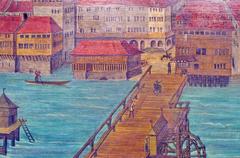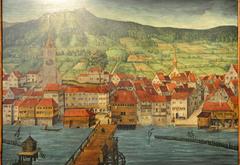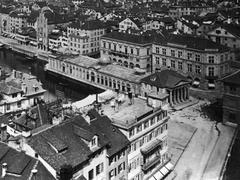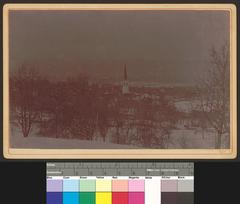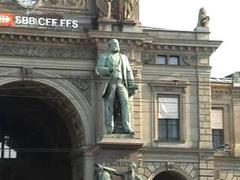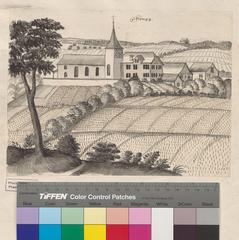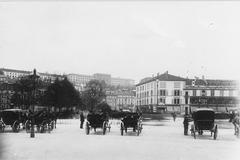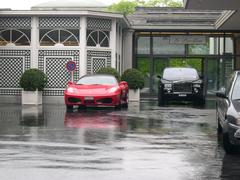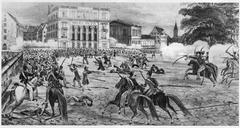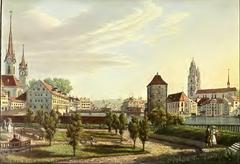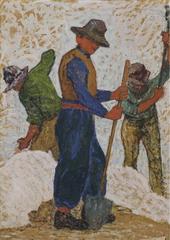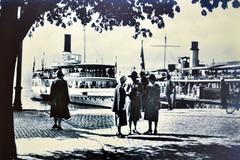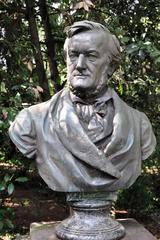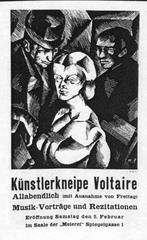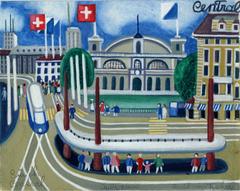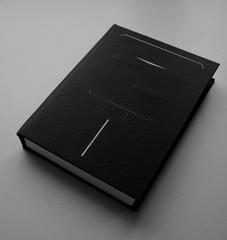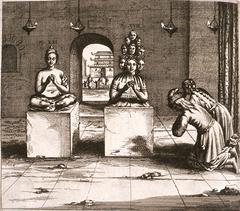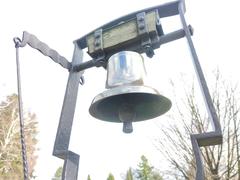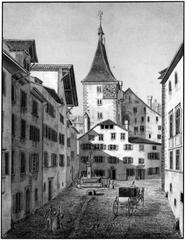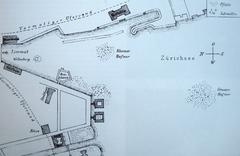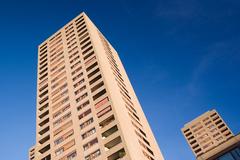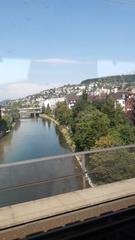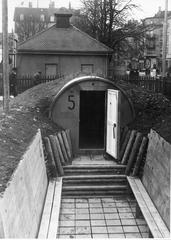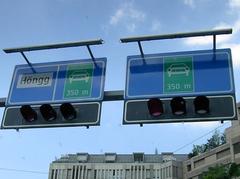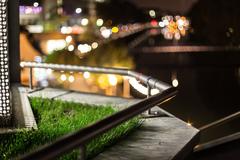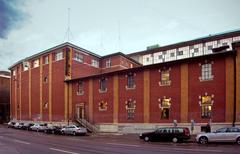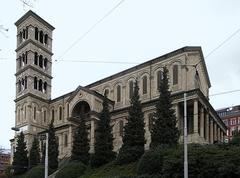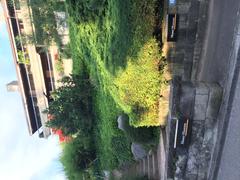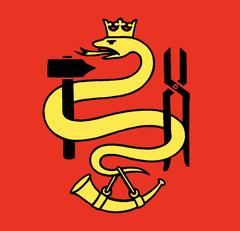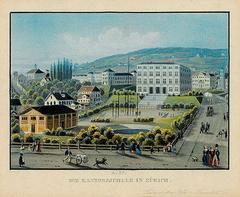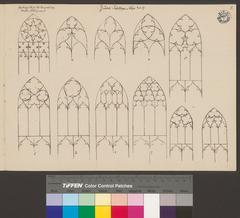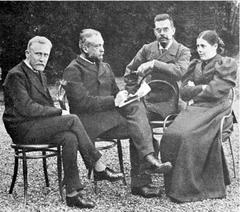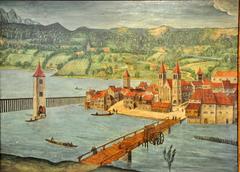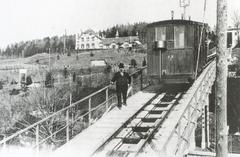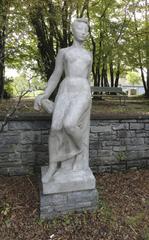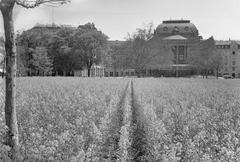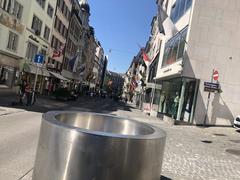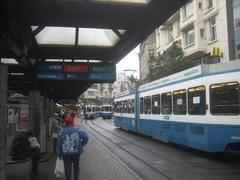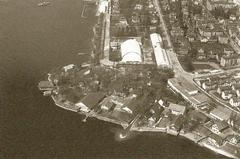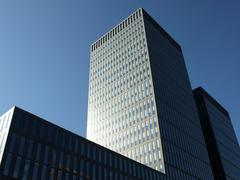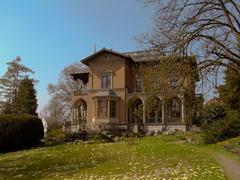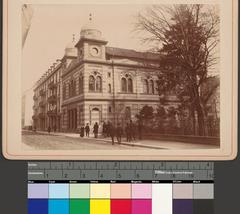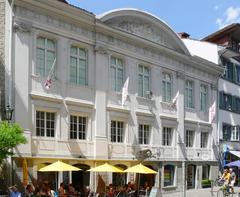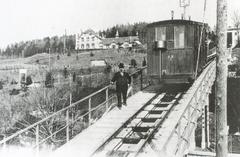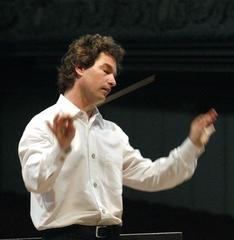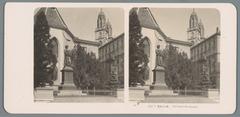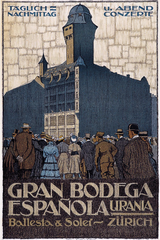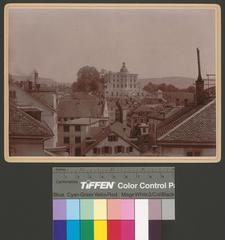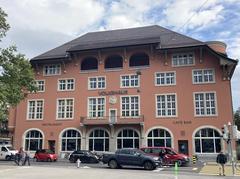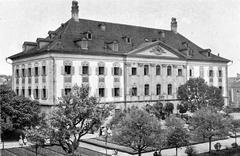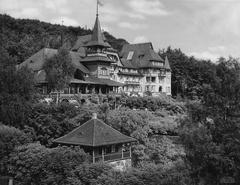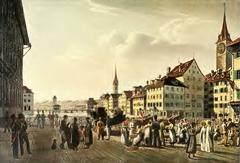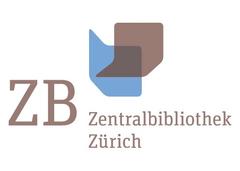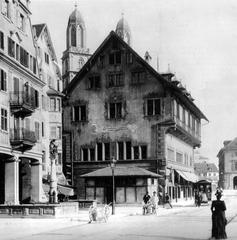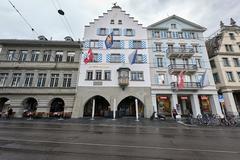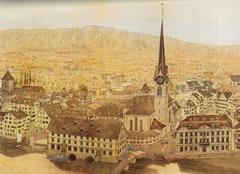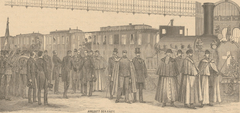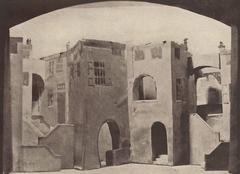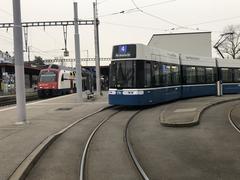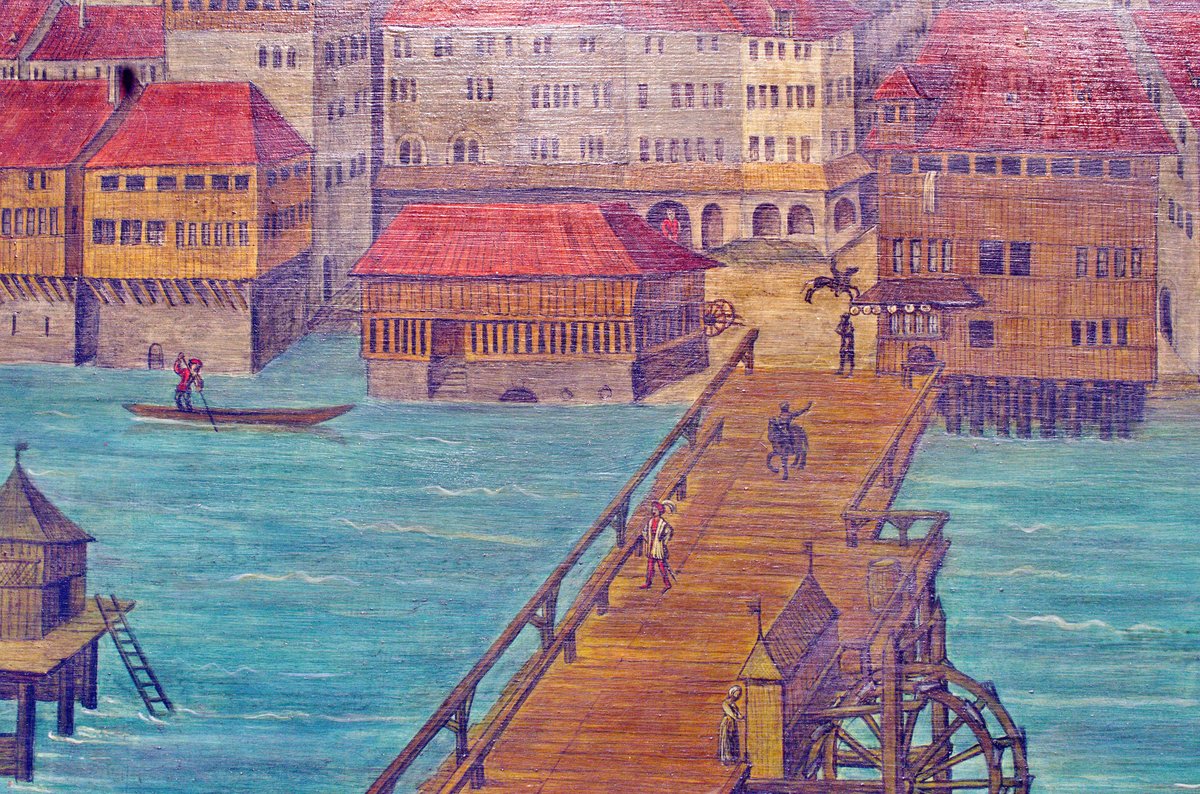
Rathausbrücke Zurich: Visiting Hours, Tickets, and Historical Sites Guide
Date: 14/06/2025
Introduction: The Significance of Rathausbrücke Zurich
At the heart of Zürich’s Old Town, the Rathausbrücke—often called the “Gemüsebrücke” or “Vegetable Bridge”—is more than a simple river crossing. This iconic pedestrian bridge connects the right and left banks of the Limmat River, acting as a historical, social, and cultural artery for the city. Since medieval times, it has evolved from wooden footbridges to Baroque stonework and, most recently, a modern concrete structure. Its transformation mirrors Zürich’s urban development and civic life (alt-zueri.ch; espazium.ch).
Rathausbrücke is celebrated for its panoramic views of landmarks like the Grossmünster and Fraumünster churches, the historic Rathaus, and the lively Limmatquai. The bridge is always open, free to visit, and fully accessible, making it a natural gathering place for both locals and visitors (nomadicmatt.com; Zürich.com; evendo.com).
A major reconstruction planned from 2025 to 2028 will further enhance flood protection, structural integrity, and pedestrian experience, reflecting Zürich’s commitment to preserving its heritage while modernizing urban infrastructure (10zu8.ch; stadt-zuerich.ch).
This detailed guide explores Rathausbrücke’s history, its role in city life, practical visitor information, and what to expect during its transformation, ensuring you get the most from your visit (alt-zueri.ch; espazium.ch).
Table of Contents
- Origins and Early History
- Architectural Evolution
- Cultural Significance
- Visitor Information & Travel Tips
- Role in Zürich’s Urban Development
- Notable Events and Associations
- The Rathausbrücke as Urban Connector and Social Hub
- Marketplace and “Gmüesbrugg”: The Bridge as Urban Square
- Architectural Evolution and Urban Identity
- Social and Cultural Symbolism
- Urban Planning and Future Developments
- The Bridge in Everyday Urban Life
- Cultural Heritage and Civic Memory
- Rathausbrücke Visiting Hours, Market Days & Nearby Attractions
- Ongoing Construction and Visitor Impact
- Frequently Asked Questions (FAQ)
- Summary and Key Tips
- References and Further Reading
Origins and Early History
Rathausbrücke, or the Town Hall Bridge, is pivotal in Zürich’s urban fabric, connecting Limmatquai to Weinplatz and Schipfe, adjacent to the 17th-century Rathaus (alt-zueri.ch). This crossing has facilitated movement and trade since Zürich’s earliest days, with its first iterations likely being simple wooden bridges. The site’s continuous use as a crossing point attests to its enduring importance.
Architectural Evolution
Medieval and Early Modern Structures
The bridge underwent multiple reconstructions and modifications in the Middle Ages, reflecting urban growth and changing technologies. By the Baroque era, it became integral to the city’s infrastructure, supporting everyday traffic and lively public markets. The 17th-century structure introduced Baroque stone arches and decorative elements (evendo.com), still recognizable today.
The “Gemüsebrücke” Era
Its nickname, “Gemüsebrücke” or “Gmüesbrugg,” stems from the vegetable market historically held atop the bridge, creating a bustling commercial hub (alt-zueri.ch). This tradition embedded the bridge in the city’s daily life.
Modern Adaptations
Modern upgrades have reinforced the bridge for pedestrian and light vehicular use, while integrating it with the evolving Limmatquai and public transit routes (evendo.com).
Cultural Significance
Civic and Social Center
Rathausbrücke’s location made it central to civic events and public gatherings, including markets, announcements, and celebrations. Its market legacy established it as a prime spot for social interaction and exchange.
Architectural Landmark
With Baroque architecture and sweeping river views—including Grossmünster and Fraumünster—Rathausbrücke is a favorite for photographers and sightseers (nomadicmatt.com).
Symbol of Urban Continuity
The bridge represents Zürich’s adaptability and continuity, serving both as a practical crossing and a symbol of the city’s layered history.
Visitor Information & Travel Tips
Visiting Hours & Accessibility
- Open: 24 hours daily, year-round
- Entry: Free; no ticket required
- Accessibility: Wheelchair and stroller friendly; nearby tram stops
Getting There
- Tram Lines: 2, 4, 15, 17 (Limmatquai, Bellevueplatz, Rathaus stops)
- Walk: 10 minutes from Zürich Hauptbahnhof
Nearby Attractions
- Zürich Rathaus (Town Hall)
- Grossmünster and Fraumünster churches
- Limmatquai promenade with shops and cafés
Market Days & Events
- Market Days: Tuesdays and Fridays, 7:00 AM – 1:00 PM (Zürich.com)
- Events: Seasonal festivals, open-air performances, and Christmas markets
Photo Opportunities
- Best at sunrise/sunset for river and cityscape views
Role in Zürich’s Urban Development
Rathausbrücke has always connected Zürich’s two riverbanks, shaping commerce and culture. The development of Limmatquai and improved crossings have been central to the city’s expansion (wikipedia.org).
Notable Events and Associations
- Historic Markets: The vegetable market is a source of local pride (alt-zueri.ch).
- Modern Celebrations: Venue for festivals, parades, and informal gatherings (evendo.com).
- Heritage Preservation: Ongoing maintenance reflects Zürich’s care for its history.
The Rathausbrücke as Urban Connector and Social Hub
The bridge is not just a crossing but a vibrant social node, linking the Rathaus, Schipfe quarter, and Weinplatz (espazium.ch). It has always served as a gathering space for people and ideas, evolving from the city’s sole vehicular crossing to a pedestrian-friendly urban square.
Marketplace and “Gmüesbrugg”: The Bridge as Urban Square
Since the 14th century, Rathausbrücke’s width has accommodated lively markets and gatherings (stadt-zuerich.ch). Its plaza-like character persists, making it a unique place to linger, meet, and experience Zürich’s public life.
Architectural Evolution and Urban Identity
The bridge’s architecture reflects centuries of change—from medieval wood and stone to 19th-century cast iron, and the 1970s concrete bridge (espazium.ch; swissinfo.ch). Despite debates over aesthetics, its broad, open form remains ideal for public gatherings and daily city life.
Social and Cultural Symbolism
The Rathausbrücke functions as a “social hinge” in Zürich’s urban landscape, uniting diverse groups and serving as a threshold between political, commercial, and residential areas (espazium.ch).
Urban Planning and Future Developments
A new bridge design—set for construction from 2026—will prioritize open public space, improved flood protection, and seamless urban integration (stadt-zuerich.ch; espazium.ch). Archaeological sensitivity and resilience are central to the plan.
The Bridge in Everyday Urban Life
Rathausbrücke is an everyday fixture for residents and tourists, serving as a meeting point, scenic promenade, and venue for spontaneous gatherings and performances.
Cultural Heritage and Civic Memory
The bridge’s market tradition and successive rebuildings reflect Zürich’s adaptability and collective memory. Its renewal aims to honor both history and future needs (espazium.ch).
Rathausbrücke Visiting Hours, Market Days & Nearby Attractions
- Open: 24/7, free entry
- Market Days: Tuesday & Friday mornings
- Access: Fully pedestrian, wheelchair and stroller accessible
- Nearby: Grossmünster, Fraumünster, Rathaus, Bahnhofstrasse, local cafés and museums (Zürich.com; Trek Zone)
- Seasonal Events: Christmas markets, open-air concerts, festivals
Ongoing Construction and Visitor Impact
From 2026 to early 2029, the bridge will undergo reconstruction to improve flood safety and urban integration (Swiss-Arc; Tages-Anzeiger). Expect detours and possible market relocations during this period.
Frequently Asked Questions (FAQ)
Q: What are the visiting hours?
A: 24/7, no closing hours or entry fee.
Q: Is the bridge accessible for people with disabilities?
A: Yes, fully accessible pathways.
Q: Are there guided tours?
A: Many Zürich city tours include Rathausbrücke.
Q: What’s the best time to visit?
A: Early mornings on market days or evenings for scenic views.
Q: Will construction affect my visit?
A: Between 2026 and 2029, expect detours and possible market relocation. Check city websites for updates.
Summary and Key Tips
Rathausbrücke Zürich is a living testament to the city’s history, urban resilience, and vibrant public life. Its evolution from medieval crossing to bustling “Gemüsebrücke” and, soon, to a modern flood-resilient plaza, encapsulates Zürich’s spirit (alt-zueri.ch; espazium.ch). For the fullest experience, time your visit for market days, explore nearby landmarks, and check current updates on construction and events (nomadicmatt.com; Zürich.com; 10zu8.ch; stadt-zuerich.ch; evendo.com).
References and Further Reading
For more travel tips, download the Audiala app and follow our social media channels for real-time updates and insights on Zürich’s landmarks.
